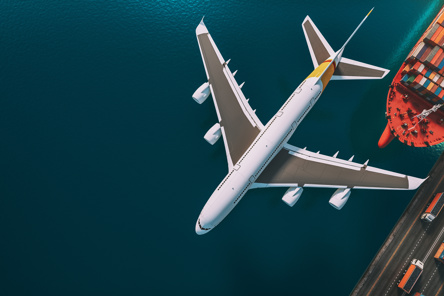Demands on the Global supply chain and logistics providers are unrelenting as capacity remains tight and spot rates continue to soar near, or beyond, traditional peak season levels.
Not only is the industry grappling with the continued impact of COVID-19 and the resulting surge in eCommerce, but there have also been a host of issues in recent weeks which have complicated the situation further. The Suez Canal blockage, port congestion, Global container repositioning, spot DOT checks and the Colonial Pipeline shutdown/restart, have all added to the challenges of an already stretched supply chain.
As we battle through these extraordinary circumstances, below is some insight from a variety of sources as to the impact across all shipping modes.
OCEAN FREIGHT
Ocean freight has been recovering since March, when the Ever Given ran aground in the Suez Canal and blocked the world’s busiest shipping lane for six days. As the world moves forward, there has been no let-up on demand, as displayed in the key figures highlighted below:
- US and Canadian container imports up 46% Y-o-Y in March, according to PIERS, returning to all-time highs
- Spot Ocean rates from Asia to U.S. West Coast up 228% Y-o-Y, according to FIBX
- Our own data suggests transactional rates over the past 30 days are equal to or higher than $7,000 as shippers pay spot market rates and/or traditional surcharges to secure capacity and move volumes above contracted commitments
- Expectations for average contracts rates in May 2021 are $2,800 - $3,200 against $1,300 - $1,700 a year ago
AIR FREIGHT
Demand for air freight has returned to pre-COVID levels but capacity remains tight. The reduced level of international travel has resulted in a 15% overall shortage of cargo capacity, which has stretched the supply chain and led to rising rates.
Cargo airlines have added 30% more capacity by operating more pure freighters and running them at higher utilization rates, but this is not enough to make up for the lost space in such a high-demand environment. The resumption of international passenger travel, which accounts for about two-thirds of airline revenue, is going to be a key element to the overall recovery.
The return to break-even levels has been hindered by the rising cost of jet fuel. IATA estimates that jet fuel will average $69 per barrel - close to the average of $77 per barrel of 2019. This increased cost is adding to the rise of air cargo rates as airlines pass on the extra expense in the form of fuel surcharges.
As we look to understand how passenger demand will recover, this will be a key indicator of belly capacity available for cargo moving forward. SEKO is collaborating with our core carriers and our clients so that we are able to efficiently plan for and secure the capacity needed to uplift our client’s shipments.
RAIL FREIGHT
After disruption to rail freight through February, recovery has been led by intermodal freight transport, while there have been some declines led by automotive, coal and petroleum markets.
Volumes in the first quarter at CSX were up 3% Y-o-Y, while Norfolk South volumes were up 5%. Union Pacific was also up 1% Y-o-Y, with intermodal strength being offset by a reduction in coal. BNSF showed increased growth with volumes up by 7%, which has been driven by higher grain and intermodal.
U.S. DOMESTIC GROUND
As with all other modes, capacity has been stretched with huge demand, to the extent that one out of every four loads that are under contract are being rejected by carriers.
Trucking spot rates have risen 30% compared to last year, however the industry is not increasing tractor and trailer purchases. The Logistics Managers’ Index, which provides a diffusion index wherein a reading above 50% indicates expansion, places U.S. Domestic Ground at 74.5%.
Most major LTL carriers and middle mile carriers are reporting their best first quarter figures in several years. Many are anticipating an increase in volumes of 20% - 40% in the second quarter, but with these increases we will see an even bigger capacity crunch.
FORECASTING IS THE KEY TO COUNTERING CHALLENGES
The current circumstances are having a huge impact on transportation budgets—that typically account for a fraction of product costs—but today have quadrupled.
The backlog of ships arriving late, particularly in a location such as Los Angeles, means that bookings need to be made four to six weeks ahead of time and locked with cancellation penalties. Although, problems are rising as some shippers double, triple, or ghost book; damaging the market through cancellations and lack of contract enforcement.
To counter the issues being experienced across the global supply chain, we are advising clients that forecasting is the key to a competitive advantage.
Some crucial steps to take into account are:
- An annual estimate by factory and point pair
- A rolling six-to-eight-week forecast, ideally provided in a centralized manner jointly with sourcing, purchasing or merchant teams
- Integrated systems that pick up orders from your ERP, translate them into cargo ready dates, and fulfillment dates
For the benefit of our clients, SEKO continues to increase investment in technologies around order management, fulfillment, visibility of Last Mile delivery, and overall demand chain management. Through these advancements we enable decision-makers to build a better picture of their supply chain by mitigating the impact of capacity, congestion and increased transportation rates.
If you are concerned with the current circumstances and the effect on your business, please don’t hesitate to contact our client support team.





